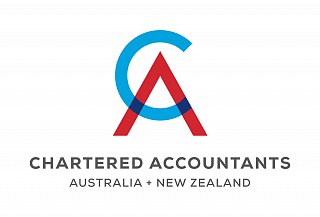Blogs

Child Death Benefit Recipients and the Transfer Cap - 1st August 2017
The death of a parent is hard on all those involved, however once the grieving has eased, a time comes to address financial matters. One of these issues can be what happens to any superannuation they have left.
Making things harder is the fact that the new transfer balance cap (TBC) brought in as of July 1, 2017 complicates this matter further. It is important that you consult a professional to ensure that all the matters are properly dealt with.
The questions you need to ask are as follows:
1. Is the recipient a child under the definition?
2. Is the recipient child already getting their own superannuation income stream as a result of a disability?
3. Did the death benefit income stream start before July 1, 2017 or on or after that date?
4. If it started on or after, then you further need to ask:
- whether the deceased parent had a transfer balance account (TBA) before the time of their death
- if the deceased parent had a TBA, the source of their super interest that the child recipient's income stream comes from
- whether the deceased parent had a TBA and also had an excess transfer balance in the retirement phase just before the time of their death.
Is the recipient a child under the definition?
A child recipient is defined as someone who is:
- under 18 years old, or
- between 18 and 25 years old and were financially dependent on the deceased at the time of their death, or
- have a permanent disability.
Once a child reaches the age of 25 they can no longer receive the death benefit income streams unless they are permanently disabled. At this point, they need to cash out their remaining benefit in the form of a tax-free lump sum payment. (A child includes step-children as well as natural born children and children who have been adopted.)
Is the recipient child already getting their own superannuation income stream as a result of a disability?
It is possible that a child may already have commenced a superannuation income stream prior to the death of their parent. In this circumstance, they will already have a personal transfer balance account. This will generally occur where the child is or has become permanently disabled and has commenced an account based pension under that condition of release.
Their personal TBC will be $1.6 million as at July 1, 2017. With the death of one or more parents they will modify their accounts to also include amounts from their parent. They will effectively have up to three $1.6 million pension transfer balance caps, as the existing transfer balance cap is disregarded when it comes to assessing their eligibility to receive a death benefit pension.
Death benefit income stream start prior to July 1, 2017
If the child is receiving the death benefit income stream prior to July 1, 2017, then the process is relatively simple. The cap increment is equal to $1.6 million, and thus the child benefit recipient can receive up to $1.6 million without exceeding their modified transfer balance cap.
However it is important to understand that the child recipient is only entitled to their share of the deceased parent's cap. If it is one child then it will be all of the cap, however if there are two or more children receiving a percentage then their modified cap will be their percentage not the total of $1.6 million.
Death benefit started on or after July 1, 2017 - No transfer balance account
For children that commence a death benefit pension on or after July 1, 2017, where a deceased parent does not have a TBA as a result of being in accumulation at the date of their death, they will be entitled to their share of their deceased parent's TBC.
Death benefit started on or after July 1, 2017 - Transfer balance account exists at time of parent's death
Where the deceased parent had a TBA at the time of death, then the outcome is dependent on what type of death benefit income stream that it comes from. Only death benefit income streams that come from a retirement phase interest of the deceased parent can be included in the cap increment. This can disadvantage a child beneficiary where the death benefit comes from the parent's accumulation increment, because in that case transfers from the accumulation phase incur no cap increments.
An amount will generally be considered to be from the retirement phase of the deceased parent where the amount came from superannuation interests supporting income streams payable to them just before their death. This includes any income earned after death but prior to transfer to a death benefit income stream.
Death benefit started on or after July 1, 2017 - Excess transfer balance in the retirement phase just before the time of their death
In the situation where at the time of the death the parent had an excess transfer balance, the child recipient's cap increment is reduced by their share of the parent's excess amount.
This effectively means that where a deceased parent has an excess transfer balance, this amount is deducted from the value of the deceased's superannuation pension at the date of death.
AV Chartered Accountants - Committed to Your Business Success
Now in two convenient locations:
WARATAH +61 2 4629 5533 | MAITLAND +61 2 4933 6100
Email mail@avca.net au












